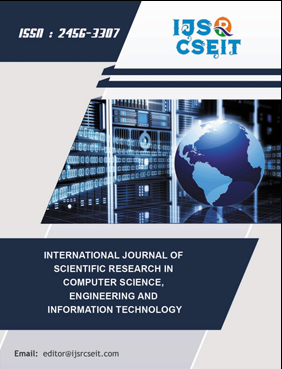Innovative Web Framework for Cervical Cancer Detection: A Machine Learning Advancement
Keywords:
AdaBoost, XGBoost, Stacking Classifier, Logistic Regression ModelsAbstract
This research presents an innovative web framework designed specifically for detecting cervical cancer using sophisticated machine learning methods. By utilizing an extensive dataset that includes information on demographics, medical history, sexual behavior, contraceptive use, and prior medical diagnoses, our framework integrates several models: AdaBoost, XGBoost, a stacking classifier, and logistic regression. These models work together to improve both the accuracy and dependability of diagnoses. The primary goal of the framework is to facilitate early detection and intervention, which are vital for enhancing patient outcomes in cervical cancer treatment. Through a detailed evaluation and comparison of these algorithms, our study highlights their effectiveness in predictive modeling for cervical cancer, representing a notable advancement in applying machine learning to healthcare.
📊 Article Downloads
References
Šarenac and Mikov (2019) explore the various treatments for cervical cancer and highlight the potential role of bile acids as therapeutic agents for this disease in their review published in Frontiers in Pharmacology.
Zhao et al. (2022) conducted a case-control study to identify cervical cancer risk factors among ethnic minorities in Yunnan Province, China. Their findings are detailed in the European Journal of Cancer Prevention.
Bray et al. (2018) offer a comprehensive analysis of global cancer statistics, including incidence and mortality rates for 36 types of cancer across 185 countries, as reported in CA: A Cancer Journal for Clinicians.
Hou et al. (2022) discuss the application of artificial intelligence in the screening and diagnosis of cervical cancer in their article published in Frontiers in Oncology.
Wen et al. (2022) examine the link between involuntary smoking and cervical cancer risk among Chinese women who have never smoked, with their study appearing in Environmental Research.
Luhn et al. (2013) investigate how co-factors contribute to the progression from human papillomavirus infection to cervical cancer, as discussed in Gynecologic Oncology.
Exner et al. (2016) assess the value of diffusion-weighted MRI in diagnosing uterine cervical cancer, comparing it to traditional MRI techniques, as reported in Acta Radiologica.
Elsalam et al. (2020) evaluate the impact of diffusion-weighted magnetic resonance imaging on cervical cancer diagnosis in their study published in the Egyptian Journal of Radiology and Nuclear Medicine.
Singh and Goyal (2020) analyze the performance of various machine learning algorithms in detecting cervical cancer, with their findings detailed in the International Journal of Healthcare Information Systems and Informatics.
Bhavani and Govardhan (2023) propose a cervical cancer prediction method using a stacked ensemble algorithm combined with SMOTE and RFERF techniques, as described in Materials Today: Proceedings.
Downloads
Published
Issue
Section
License
Copyright (c) 2024 International Journal of Scientific Research in Computer Science, Engineering and Information Technology

This work is licensed under a Creative Commons Attribution 4.0 International License.




